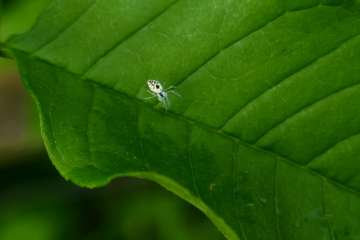Species Account for Nigma puella
Nigma puella (Simon, 1870)
Araneae: Dictynidae

Reproduction for study and non-profit use permitted, all other rights reserved.
Taxonomic group: spiders (Araneae) - County data
View time series maps for Nigma puella
member log-on for taxon report
Status: NS
Essex RDB: Listed
Threat: Regionally Important
Images
upload a new image
National map for Nigma puella on Spider and Harvestman Recording Scheme website
Species text
The spider is very local and is restricted to south of a line from Suffolk to Glamorgan. In Essex it has an interesting distribution, apparently confined to an area near the coast where it is reasonably frequent. The spider occurs on low broad-leaved bushes and shrubs in hedgerows and gardens, but also sometimes in scrub and open woodland. It spins a small web on the surface of leaves. Open surroundings seem to be important. The excessive trimming and loss of hedgerows are likely to threaten this species. Where the species occurs on hedgerows between arable fields the spider and its potential prey are presumably threatened by spray drift from pesticides. The retention of wide field edges and headlands should be encouraged to help maintain a diverse invertebrate fauna and reduce the effects of spray drift on hedgerows and at the edge of woodland. Management should prevent the closure of scrub and woodland. References
Habitats
Recorded management for locations with Nigma puella
Recorded substrate and hydrology for locations with Nigma puella
Why not join the Club, register and add a new species page
Interpretation of distribution maps




















